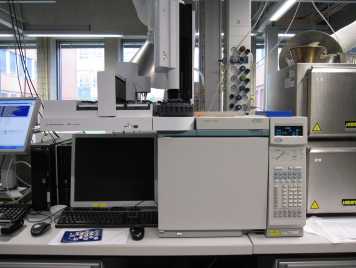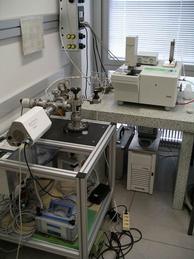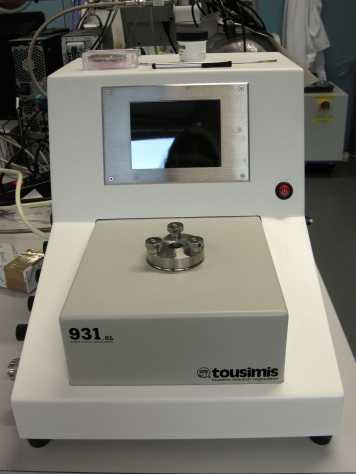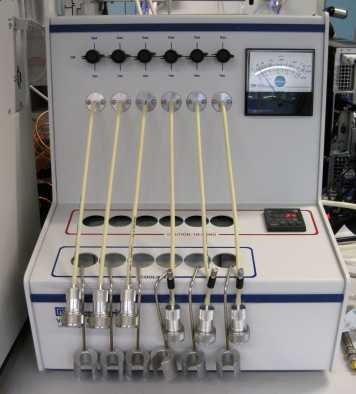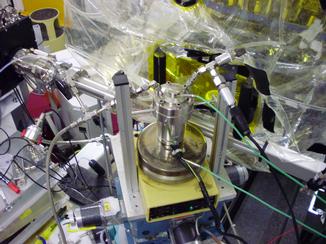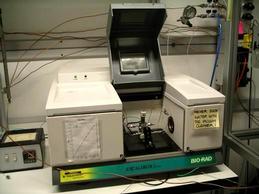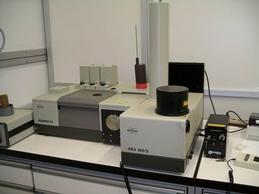Infrastructure
Equipment
Light Microscope (Leica)
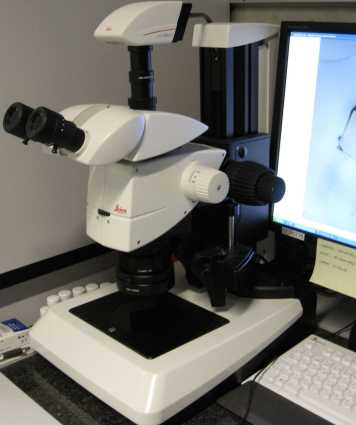
- Fitted with a DFC425 C digital microscope camera with c-mount interface and with a 5 Megapixel CCD sensor. The camera allows image capture for darkfield, brightfield and phase contrast microscopy.
- Fitted with a M165 C fully apochromatic corrected stereo microscope with 16.5:1 zoom and maximum 906 lp/mm (planapochromatic 2x objective).
- Resolution at 1.1µm with standard 1x Planapochromatic objective.
- Peltier cooling system.
MARSXpress (CEM Corporation)
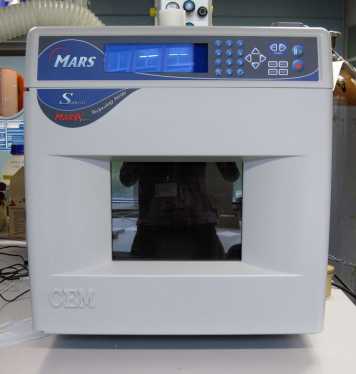
The Microwave Accelerated Reaction System, Model MARS, is designed for laboratory digestions, dissolution, hydrolysis, extraction or drying. At full power the MARS delivers 1600 watts at 2450 MHz.
The MARS comprises a:
- microwave power system with operator selectable output of 1600 watts (+/- 15%) by IEC MEthod.
- fluoropolymer-coated microwave cavity.
- cavity exhaust fan.
- digital computer programmable for 100 programs consisting of up to five stages.
- continuous or alternating mode turntable system.
- three door safety interlocks and an interlock monitoring system to prevent microwave emission upon door release.
Acquity UPLC H-Class System (Waters)
The Acquity UPLC H-Class system allows:
- Multi-solvent blending: The QSM blends four solvents in any combination or proportion. Up to nine solvent choices with the optional internal solvent-select valve for flexibility with methods.
- Direct inject sampling: The needle-in-flow path of the SM-FTN delivers high-precision injections with excellent sample recovery, with accurate needle seal at high pressure.
- Column pre-heaters ensure consistent thermal performance; column managers offer multi-zone flexibility with a temperature range of 4 to 90 °C, and are stackable.
- Managed dwell volume: The ACQUITY UPLC H-Class’s SmartStart Technology automatically manages gradient start time and pre-injection steps in parallel. By overlapping these typically serial processes, cycle time is minimized.
XAS Cells
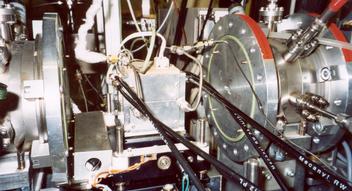
- Gas and vacuum tight stainless steel cells for EXAFS measurments in controlled atmosphere from 77 to 773 K (design of Koningsberger et al, University of Utrecht). Fluorescence measurements possible.
- Stainless steel flow cell dedicated for in situ measurements in the temperature range of 293 to 873 K.
- EXAFS cell dedicated to the measurement of flat supports in fluorescence mode.
Berghof autoclaves
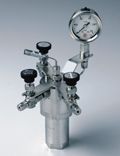
25 ml Teflon-lined stirred batch reactors equipped with temperature and pressure controller, high pressure gas inlet and valve for liquid sampling.
Premex high pressure reactors
60 ml stainless-steel batch reactors equipped with temperature and pressure controller, mechanical stirrer, gas inlet and sampling valve.
Max. T: 200 °C
Max. p: 300 bar
Up-flow fixed-bed reactor
Up-flow fixed-bed reactor for continuous alkylation reactions in a liquid phase.
The high field magnets and high spinning speeds have made NMR the state of the art technique for studying quadrupolar nuclei with very large quadrupolar broadenings. The development of solid state NMR for measuring heteronuclear dipole interactions has a large impact on the study of solids. We use these techniques to study the local structure of zeolites and related materials.
In addition, we investigate catalysts like metal-phosphides and metal- borides with large paramagnetic shifts with NMR.
For our NMR research we have access to 400 MHz and 700 MHz spectrometers with solid state probes (shared with other groups).
Bruker Ultra-shield Avance AMX 400 MHz magnet
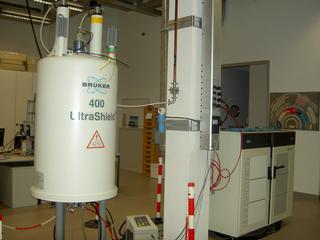
Probes
1. Double resonance 2.5mm probe head (magic angle spinning ~ 30 kHz)
2. Double resonance 4mm probe head (magic angle spinning ~ 14 kHz)
3. Triple resonance 4mm probe head (magic angle spinning ~ 14 kHz)
4. Double resonance 7mm probe head (magic angle spinning ~ 7 kHz)
Bruker Ultra-shield Avance 700 MHz magnet
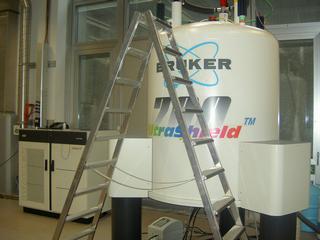
Probes
Triple resonance 2.5mm probe head (magic angle spinning ~ 30 kHz)
TriStar 3000 (Micromeretics)
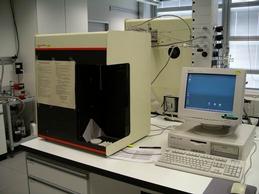
- for determination of surface areas, pore volumes and pore size distributions in the mesopore range
- not suited for extremely low pressures (micropore distributions)
- measures adsorption isotherms (N2, Ar, etc.) of three samples simultaneously
TriStar II (Micromeretics)
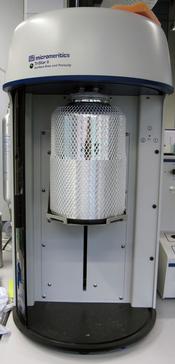
- for determination of surface areas, pore volumes and pore size distributions in the microporous range. Surface areas as low as 0.01 m2/g can be measured with the standard nitrogen system. The TriStar II accommodates the use of argon, carbon dioxide, and other non-corrosive gases such as butane, methane, or other light hydrocarbons. Up to 1000 data points can be collected.
- suited for extremely low pressures (micropore distributions).
- measures adsorption isotherms (N2, Ar, etc.) of three samples simultaneously.
